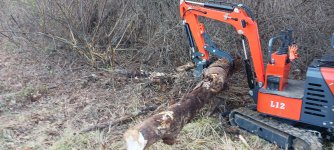First, welcome to TBN.
I deliberately used the term "servo" to describe what are usually called "pilot-operated" valve. The term, servo, short for servomechanism or servomotor describes a system that uses a secondary power source to operate a primary power source to operate a device that does work. Usually, some form of feedback of the position of the secondary mechanism is involved. That feedback could be electrical, electronic, hydraulic, or even visual. Without this feedback, we would have what engineers call an "open-loop" system.
In our excavator, we have an operator-controlled lever, that controls a small spool valve that supplies hydraulic power to the the spool of a larger primary valve, which then spins a motor or moves a cylinder. Feedback is visual, as the operator feathers the joystick valve control to proportionally move the secondary valve spool.
In industrial fluid power, secondary control can be hydraulic, electric, electronic (proportional or on-off), even pneumatic. As in any industry, there is a lot of jargon. It seems to me that the term servo (as in servant or slave) may be clearer to outsiders than "pilot-operated".


